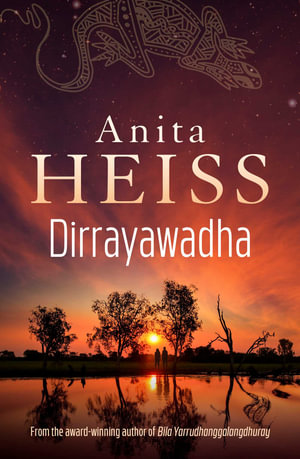Dirrayawadha: Rise up by Anita Heiss

Anita Heiss brings us another wonderful historical romance, following the success of Bila Yarrudhanggalangdhuray (2021) which told the true story of the heroic feats of Aboriginal men, Yarri and Jacky Jacky during the Gundagai floods of 1852. With Dirrayawadha, she now celebrates heroic warrior and resistance fighter Windradyne and his clan’s war against the English invasion of Wiradyuri country in the early 1800s.
The novel centres on young Wiradyuri woman Miinaa, the fictional sister of Windradyne, and her life as a servant on an Irish Catholic couple’s property, Cloverdale, near Bathurst. When handsome Irish convict Dan O’Dwyer comes to serve out the last years of his sentence at Cloverdale, love blossoms between the two. It is a gentle love story, the two having to gradually learn about each other’s culture and build a trusting relationship. It is an opportunity for Heiss to draw parallels between the Irish and Aboriginal experience of dispossession at the hands of the English. Just as Dan swore to fight for his homeland of Ireland, Miinaa also wants to join Windradyne to fight for their country and protect their culture. Some of the conversations Miinaa has with Dan provide the most compelling insight into Aboriginal connection to country and their culture of respect and sharing, a culture that is disrespected and crushed by the brutal incursions of the invaders.
The love story is romantic and will keep the reader engaged until the end, but the true power of this book is the portrayal of historical hero Windradyne, his heart torn between safeguarding his family, and a determination to resist and rise up – dirrayawadha! As his people are killed, and traditional sites are overrun, Windradyne draws different clans together in a united resistance, in what came to be known as the Bathurst wars, with loss of life on both sides. Eventually the toll is too much, and a tentative peace process is pursued.
Religion is another strong theme running throughout the story with comparisons made between Catholic and Wiradyuri ideas of god, prayer and moral values. It further illuminates the Wiradjuri values of respect and family, and gives credence to their unique spirituality.
Wiradyuri language is woven throughout the novel, and generally the meaning may be understood by context, but a glossary is also available to refer to at the front of the book. It is part of Heiss’s determination to reclaim and maintain the traditional language of her people.
Dirrayawadha is brilliant way to engage readers with Australian history from an Aboriginal perspective and help people understand the loss and dispossession, the injustice and violence that characterised the colonial years, and the repercussions that continue to be felt today. Heiss writes that
‘we can create a better future for all if we can be honest and brave in our storytelling, in truth-telling, and in being willing to listen to what needs to be heard, particularly around warfare across the land, which in the main still goes unheard’.
Following the disappointment of the 2023 referendum, Heiss sees truth-telling as the path forward. This book is a part of that.
Themes: Aboriginal history, Wiradyuri, Windradyne, Resistance, Dispossession, Religion, Sorrow, Love.
Helen Eddy